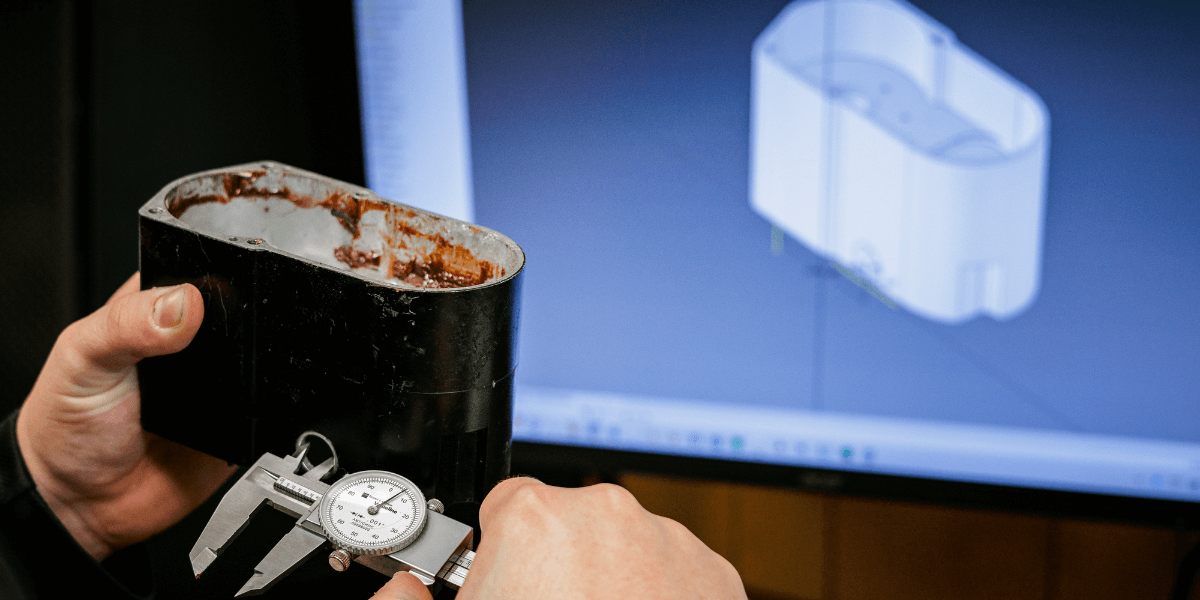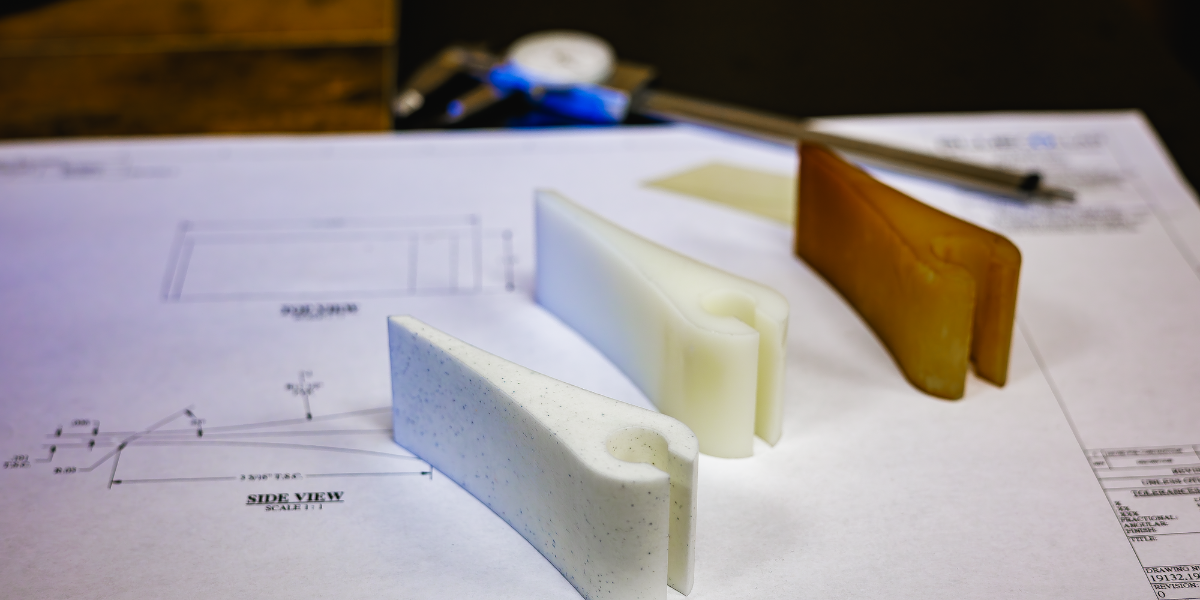The Importance of Precision in Drafting for Engineering
Accurate drafting is the backbone of any successful mechanical engineering project. Precision in these early stages ensures that every component fits...
5 min read
Blue Collar Oct 2, 2024 9:00:00 AM
How can engineers push the boundaries of innovation while maintaining precision and efficiency? Artificial intelligence (AI) is proving to be a game-changer in mechanical engineering, enhancing every aspect from design and drafting to manufacturing processes. As AI-driven tools become more sophisticated, they offer engineers a way to streamline workflows, increase accuracy, and deliver smarter designs faster than ever before.
This blog explores the many ways AI is transforming the world of mechanical engineering and how these advancements are paving the way for smarter, more efficient production in the future.
AI in mechanical engineering is more than a trend—it’s a necessity. By incorporating machine learning algorithms, data-driven simulations, and advanced robotics, AI helps engineers design, analyze, and produce mechanical systems that meet higher standards of precision and functionality. Whether it's optimizing designs for manufacturability or improving the efficiency of production lines in plants, AI is reshaping how engineers approach every stage of development.
AI in design has shifted the industry from manual processes to automated, data-driven solutions. Engineers no longer need to spend countless hours refining designs—AI tools can automatically generate multiple variations based on a set of constraints, such as material usage or performance goals. This automation speeds up the drafting process, allowing engineers to explore a broader range of design possibilities. Not only does this improve creativity, but it also ensures that designs meet high standards for efficiency and functionality.
Modern AI-assisted drafting tools allow engineers to achieve greater accuracy in less time. These programs use predictive algorithms to recommend the best configurations and flag potential issues before they reach the production phase. By providing real-time feedback during the drafting process, AI helps engineers catch errors that might otherwise go unnoticed. This results in fewer design revisions and significantly reduces the risk of costly manufacturing delays.
%20(1).png?width=500&height=308&name=engineering%20%20(2)%20(1).png)
AI has also enhanced computer-aided design (CAD) by enabling more intuitive and smarter models. With AI-powered CAD tools, engineers can input performance data, and the software will automatically suggest improvements or alternative designs.
This process ensures that the final design is optimized for both performance and manufacturability. The days of laboriously tweaking CAD models to perfection are being replaced by AI’s ability to analyze and improve designs with unprecedented speed and accuracy.
Simulation-driven design is one of the most powerful uses of AI in mechanical engineering. Engineers can run simulations of how a product will behave under real-world conditions, including temperature fluctuations, pressure, and load stress. AI algorithms process vast amounts of data to provide accurate predictions of a product’s performance, reducing the need for physical prototypes. This not only accelerates the design process but also increases precision, as engineers can refine the design to mitigate any potential issues long before the manufacturing stage.
The integration of real-time data into the design process is another leap forward made possible by AI. With real-time sensors feeding data into AI systems, engineers can adjust their designs on the fly based on actual performance data. This ensures that designs are not only theoretically sound but also practical for real-world manufacturing conditions. AI’s ability to process and interpret large datasets quickly allows engineers to continuously improve their designs with live insights, leading to more durable, efficient products.
AI doesn’t stop at design and drafting—it’s reshaping the manufacturing process as well. From intelligent automation to quality control, AI-powered systems are driving significant improvements in efficiency, precision, and scalability on the production floor. This section will explore the ways AI is streamlining the manufacturing phase and transforming the way products are brought to life.
AI enables manufacturers to optimize production processes in real-time, adjusting variables such as machine speeds, material usage, and workflow configurations to maximize efficiency. Machine learning algorithms analyze vast datasets from production lines, identifying patterns that human operators might miss. These insights allow AI to suggest ways to streamline operations, minimize waste, and boost output without sacrificing quality. This real-time process optimization translates into faster production cycles, lower costs, and improved scalability.
AI-powered robotics are taking on increasingly complex tasks in manufacturing environments. These robots are equipped with machine learning capabilities that allow them to adapt their actions based on AI analysis. Whether it’s assembly, welding, or material handling, AI-driven robotics can perform tasks with higher precision and consistency than human workers. The result is a safer, more efficient production floor where machines handle repetitive or dangerous tasks, while engineers focus on higher-level problem-solving and innovation.
Another key area where AI shines is predictive maintenance. AI systems can monitor equipment performance in real time, detecting signs of wear or malfunction before they lead to costly breakdowns. By using predictive analytics, manufacturers can schedule maintenance more efficiently, reducing downtime and extending the life of their equipment. This proactive approach to maintenance not only improves productivity but also lowers operational costs by preventing unexpected repairs and minimizing equipment failure.
One of the challenges in mechanical engineering is optimizing material usage for both cost and performance. AI can analyze vast amounts of data on material properties and recommend the most efficient materials for specific applications. By optimizing material usage during the design phase, engineers can reduce waste, lower production costs, and ensure that the final product meets performance requirements. AI’s ability to quickly analyze multiple design variables allows engineers to strike the perfect balance between durability, cost, and efficiency.
.png?width=500&height=308&name=rendering%20(1).png)
Traditional prototyping can be a time-consuming and expensive process, but AI is changing that. With AI-driven prototyping, engineers can create digital twins of their designs and test them in a virtual environment.
These digital models can simulate real-world performance, allowing engineers to refine their designs before committing to physical prototypes. This accelerates the product development cycle and leads to better products, as engineers can iterate quickly and focus on perfecting the design without the constraints of physical testing.
AI also allows for greater customization in product development. Whether it’s tailoring a product for specific user needs or creating bespoke designs, AI tools can analyze customer data and preferences to generate customized solutions. This level of personalization was once only possible through manual effort, but AI has made it scalable. Engineers can now use AI to develop designs that meet specific requirements without sacrificing efficiency or precision.
The next frontier for AI in mechanical engineering is autonomous design systems. These systems will use AI to generate complete designs without human input, analyzing thousands of design options and selecting the best one based on performance criteria. While we’re not quite there yet, the foundation is already being laid for fully autonomous engineering systems that can handle complex design tasks from start to finish. In the near future, engineers may rely on AI not just as a tool, but as a co-designer that can autonomously create and refine engineering solutions.
Another exciting prospect for AI in mechanical engineering is enhanced collaboration between human engineers and AI systems. Instead of replacing human creativity, AI will serve as a collaborative partner, augmenting the engineer’s capabilities. AI systems will be able to generate ideas, test hypotheses, and offer suggestions, while human engineers provide direction and make final decisions. This hybrid approach will allow engineers to push the boundaries of what’s possible in mechanical design.
At Blue Collar Engineering, we’re passionate about using AI to push the boundaries of mechanical engineering. From smarter design and drafting to efficient production processes, we integrate the latest AI technologies to deliver superior solutions for our clients.
Whether you’re looking to optimize your manufacturing operations, improve precision in product development, or explore new possibilities in mechanical engineering, we have the tools and expertise to help you succeed. Learn more about how AI is revolutionizing engineering and how we can elevate your next custom project by visiting our website today.
At Blue Collar Engineering, we specialize in turning concepts into reality. With expertise in 3D scanning, design and drafting, prototyping, engineering, and production management, our team is dedicated to bringing your ideas to life with precision and passion.
From initial concept to final product, we are committed to delivering innovative solutions that meet and exceed your expectations. Whether you're in the food & beverage, oil & gas, or outdoor industry, our multidisciplinary team is equipped to provide turnkey solutions tailored to your needs.

Accurate drafting is the backbone of any successful mechanical engineering project. Precision in these early stages ensures that every component fits...

Mechanical engineering plays a pivotal role in the creation of products we as consumers use daily. From the simplest household items like a...

How much faster could you innovate if your ideas could take shape overnight? For engineers and product developers, speed is everything—and when it...